While both acoustic and classical guitars might seem like they belong to the same family at first glance, a closer inspection reveals significant differences that impact everything from sound to playing style. Both feature six strings, a resonating soundhole, and tuning pegs, yet these shared elements function in distinct ways. If you’re venturing into the world of guitar playing or considering adding a new instrument to your collection, understanding the nuances between an acoustic guitar and a classical guitar is crucial. Let’s explore these key distinctions to help you make an informed choice.
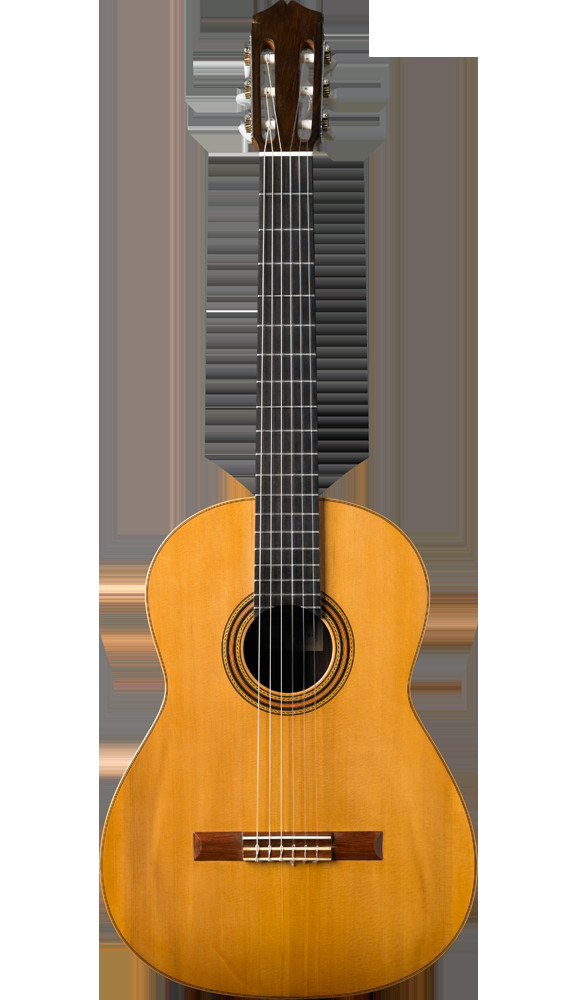 Acoustic guitar (left) with steel strings and a narrower neck versus a classical guitar (right) with nylon strings and a wider neck, highlighting the visual differences between these two guitar types.
Acoustic guitar (left) with steel strings and a narrower neck versus a classical guitar (right) with nylon strings and a wider neck, highlighting the visual differences between these two guitar types.
Shape and Body Size
Acoustic guitars are commonly recognized by their dreadnought shape, a design celebrated for its robust volume and projection. Parlor-sized acoustics, smaller and more intimate, also exist, offering a different tonal character. While some parlor guitars can be smaller than classical guitars, the size spectrum varies across acoustic guitar manufacturers. Generally, acoustic guitars, particularly dreadnoughts, tend to have a larger body and a narrower waist compared to classical guitars, contributing to their louder and more resonant sound.
Classical guitars, on the other hand, typically adhere to a more traditional body shape, often described as smaller and more rounded than a dreadnought acoustic. This body shape, coupled with other design elements, contributes to the classical guitar’s characteristic warm and mellow tone, which is distinct from the brighter sound of an acoustic guitar.
Neck Profile and Width
The neck of a guitar plays a pivotal role in playability and technique. Classical guitars are distinguished by their wider necks compared to acoustic guitars. This wider neck is intentionally designed to facilitate fingerstyle playing, a technique central to classical guitar music. The increased string spacing on a classical guitar offers more room for the fingers to pluck individual strings cleanly, essential for complex classical pieces and flamenco styles. Interestingly, classical guitar necks often lack fret markers on the fretboard face, which might pose an initial adjustment for some players but is a standard feature in classical guitar tradition.
Acoustic guitars typically feature narrower necks, which are generally more comfortable for strumming chords and playing faster melodic lines. The tighter string spacing on acoustic guitars makes chord transitions quicker and easier, catering to styles like folk, rock, and country where strumming and chord-based playing are prevalent. This narrower profile is often preferred by players who transition from electric guitars or those accustomed to faster, chord-driven music.
Bridge and String Attachment
The bridge, the component that anchors the strings to the guitar body, also differs significantly between acoustic and classical guitars. Classical guitars utilize a tie-block bridge, a design where the nylon strings are tied directly onto the bridge. This method of string attachment is similar to that found on ukuleles and is integral to the classical guitar’s construction and sound. While traditionally using tie-end strings, classical bridges can also accommodate ball-end classical strings, offering an alternative and sometimes preferred stringing method for convenience.
Acoustic guitars employ a pin bridge system. Here, strings are fitted with ball ends that are secured into the bridge using bridge pins. This system is designed to withstand the higher tension of steel strings used on acoustic guitars. The pin bridge contributes to the acoustic guitar’s bright and resonant sound by efficiently transferring string vibrations to the guitar’s soundboard.
Strings: The Core Difference in Sound
The most fundamental difference between acoustic and classical guitars lies in the strings they use. Classical guitars are strung with nylon strings, whereas acoustic guitars use steel strings. This distinction is the primary source of their contrasting sounds and playing experiences.
Nylon strings, characteristic of classical guitars, are significantly thicker and produce a mellow, softer, and warmer tone compared to steel strings. The treble strings (G, B, high E) are made of solid nylon monofilament, while the bass strings (E, A, D) consist of a nylon multifilament core wrapped with silver-plated copper. Nylon strings are gentler on the fingertips, offering a more forgiving feel, particularly beneficial for beginners or players with sensitive fingers. The sound of nylon strings is deeply associated with classical, flamenco, and Spanish guitar music.
Steel strings on acoustic guitars are much thinner and generate a bright, crisp, and resonant sound, often described as having a twang. Acoustic guitar strings are manufactured from various metals and alloys, including bronze and phosphor bronze, each influencing the tonal characteristics. Steel strings are under much higher tension than nylon strings, contributing to the acoustic guitar’s louder volume and brighter timbre, which are essential for genres like rock, folk, blues, and country. While steel strings provide a vibrant sound, they can be harder on the fingers initially, requiring calluses to develop for comfortable playing.
Exploring String Types for Your Guitar
Both classical and acoustic guitars offer a range of string options to cater to different playing styles and tonal preferences. Ernie Ball provides a diverse selection of both classical and acoustic guitar strings, allowing players to fine-tune their instrument’s sound.
Classical Guitar Strings
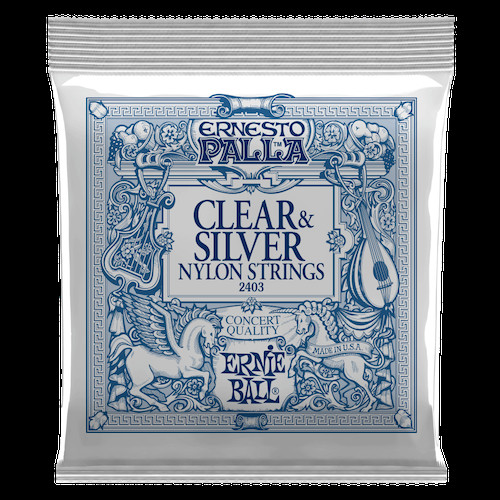 Ernesto Palla Clear & Silver Nylon Classical Guitar Strings, popular for their smooth, rich tone and excellent clarity, ideal for classical guitarists.
Ernesto Palla Clear & Silver Nylon Classical Guitar Strings, popular for their smooth, rich tone and excellent clarity, ideal for classical guitarists.
Ernesto Palla Clear & Silver Nylon Strings: These are among the most popular choices for classical guitarists, known for delivering a smooth, rich tone with exceptional clarity and consistent performance, making them ideal for concert-level playing.
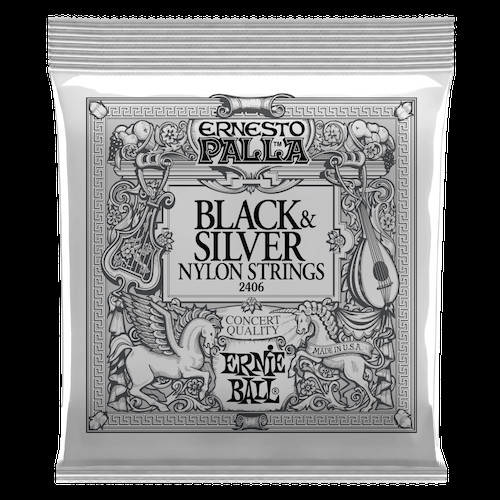 Ernesto Palla Black & Silver Nylon Classical Guitar Strings, crafted from a different material for a warmer tone with enhanced treble overtones, favored by folk guitarists.
Ernesto Palla Black & Silver Nylon Classical Guitar Strings, crafted from a different material for a warmer tone with enhanced treble overtones, favored by folk guitarists.
Ernesto Palla Black & Silver Nylon Strings: Constructed from a different nylon composition, these black nylon strings produce a warmer and purer sound, emphasizing treble overtones. They are particularly favored by folk guitarists seeking a unique tonal color.
Ernesto Palla Black & Gold Ball-End Nylon Classical Guitar Strings: These strings combine gold wound basses, made of 80/20 bronze wrapped around a nylon core, to provide a smooth, rich tone. The ball-end construction offers a significant convenience, allowing for faster and easier string changes compared to traditional tie-end strings.
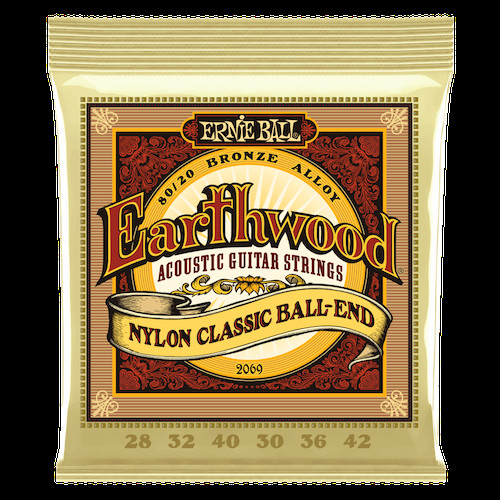 Earthwood Folk Nylon, Clear & Gold Ball End, 80/20 Bronze Acoustic Guitar Strings, designed for nylon-string acoustic guitars with a percussive attack and rich treble.
Earthwood Folk Nylon, Clear & Gold Ball End, 80/20 Bronze Acoustic Guitar Strings, designed for nylon-string acoustic guitars with a percussive attack and rich treble.
Earthwood Folk Nylon, Clear & Gold Ball End, 80/20 Bronze Acoustic Guitar Strings: Specifically designed for nylon-string acoustic guitars, these strings feature clear nylon treble strings for rich, pure tones and 80/20 bronze wound bass strings for a percussive attack and warm bass response.
Acoustic Guitar Strings
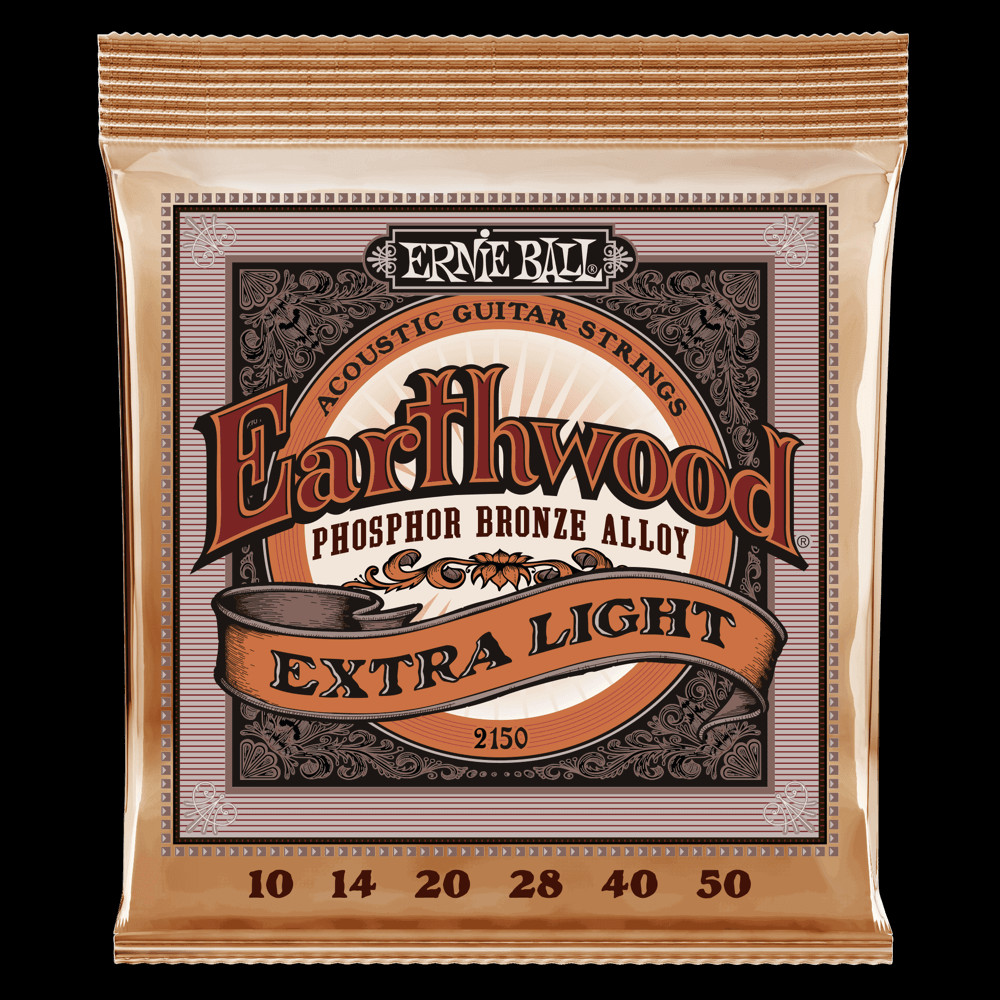 Ernie Ball Earthwood Acoustic Guitar Strings, available in Phosphor Bronze and 80/20 Bronze, known for providing a mellow, ringing sound or crisp overtones for acoustic guitars.
Ernie Ball Earthwood Acoustic Guitar Strings, available in Phosphor Bronze and 80/20 Bronze, known for providing a mellow, ringing sound or crisp overtones for acoustic guitars.
Earthwood Acoustic Guitar Strings: A popular choice for acoustic players, Earthwood strings are available in Phosphor Bronze, known for a mellow and ringing sound, and 80/20 Bronze, which delivers crisp and bright overtones, catering to diverse acoustic tones.
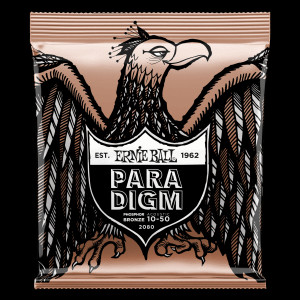 Paradigm Acoustic Guitar Strings, offering exceptional strength and longevity while maintaining Earthwood tone and feel in both 80/20 and Phosphor Bronze varieties.
Paradigm Acoustic Guitar Strings, offering exceptional strength and longevity while maintaining Earthwood tone and feel in both 80/20 and Phosphor Bronze varieties.
Paradigm Acoustic Guitar Strings: Paradigm strings are engineered for unprecedented strength and extended string life without sacrificing tonal quality or feel. Available in both 80/20 and Phosphor Bronze, they retain the signature Earthwood tone while offering enhanced durability.
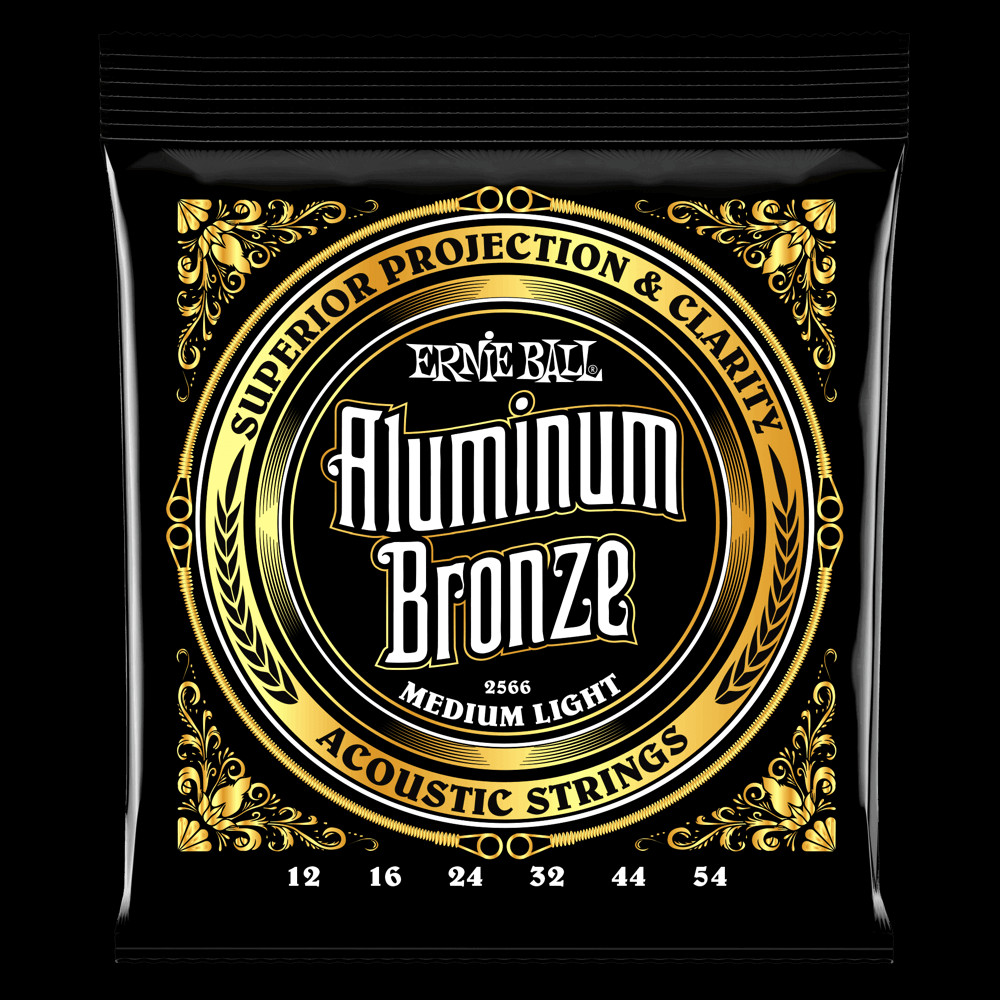 Aluminum Bronze Acoustic Guitar Strings, providing enhanced projection, clarity, and corrosion resistance with a unique blend of copper and aluminum.
Aluminum Bronze Acoustic Guitar Strings, providing enhanced projection, clarity, and corrosion resistance with a unique blend of copper and aluminum.
Aluminum Bronze Acoustic Guitar Strings: These strings are crafted with a unique blend of copper and aluminum, offering superior projection and clarity compared to traditional bronze strings. They also provide improved corrosion resistance and deliver pronounced lows and brilliant highs, thanks to their Ernie Ball Maraging Steel hex cores.
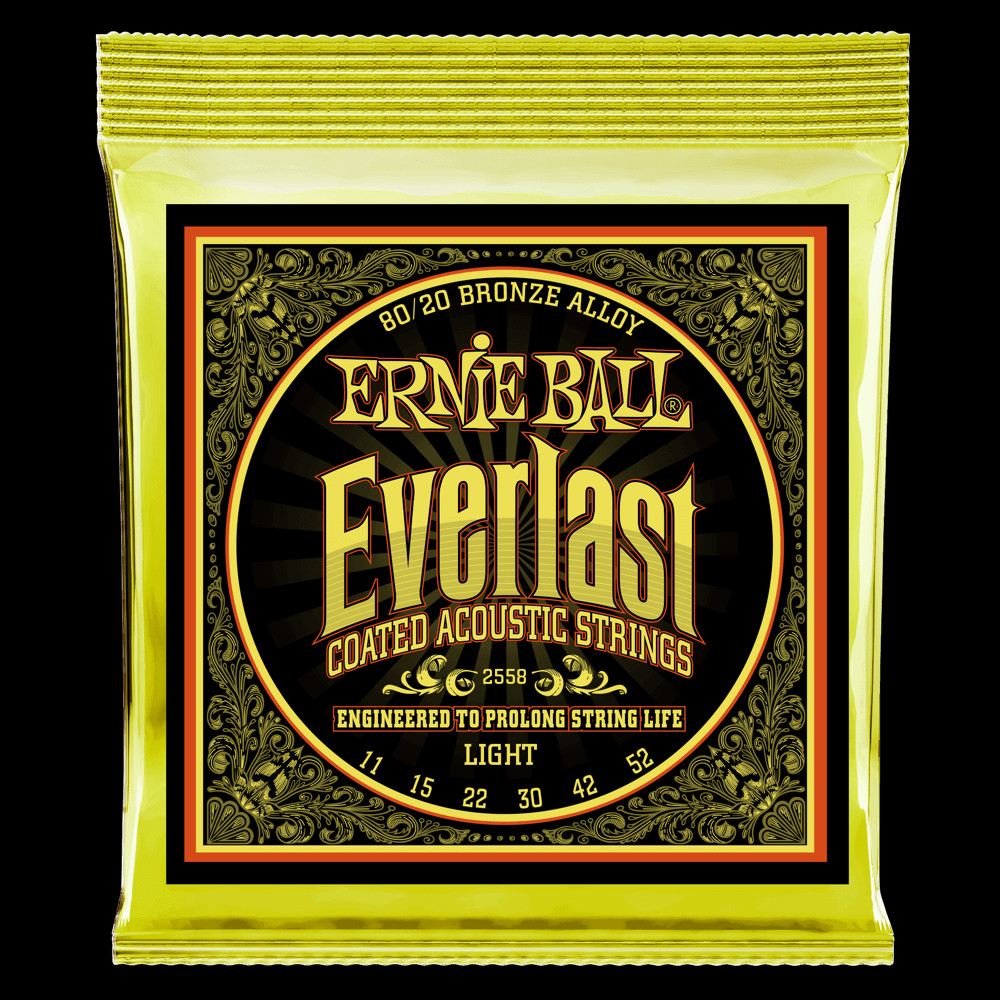 Everlast Coated Acoustic Strings, featuring nanotechnology coating for moisture and oil resistance, available in 80/20 and Phosphor Bronze for extended tone life.
Everlast Coated Acoustic Strings, featuring nanotechnology coating for moisture and oil resistance, available in 80/20 and Phosphor Bronze for extended tone life.
Everlast Coated Acoustic Strings: Everlast Coated acoustic strings utilize groundbreaking nanotechnology to repel moisture and oils, extending string life and maintaining tone. Available in 80/20 and Phosphor Bronze, the coating is applied to both the inner core and outer wrap wire for comprehensive protection without compromising feel or sound.
Conclusion
Choosing between an acoustic and a classical guitar ultimately depends on your musical aspirations and playing preferences. If you are drawn to classical, flamenco, or traditional Spanish music, the classical guitar with its nylon strings and warm tone is the natural choice. Its wider neck and finger-friendly strings also make it a comfortable option for beginners exploring fingerstyle techniques.
Conversely, if you are interested in genres like rock, pop, folk, country, or blues, the acoustic guitar with its steel strings and bright, resonant sound is likely more suitable. Its narrower neck and versatile sound make it well-suited for strumming chords and playing across a wide range of contemporary music styles. Understanding these fundamental differences will guide you towards the guitar that best aligns with your musical journey.
